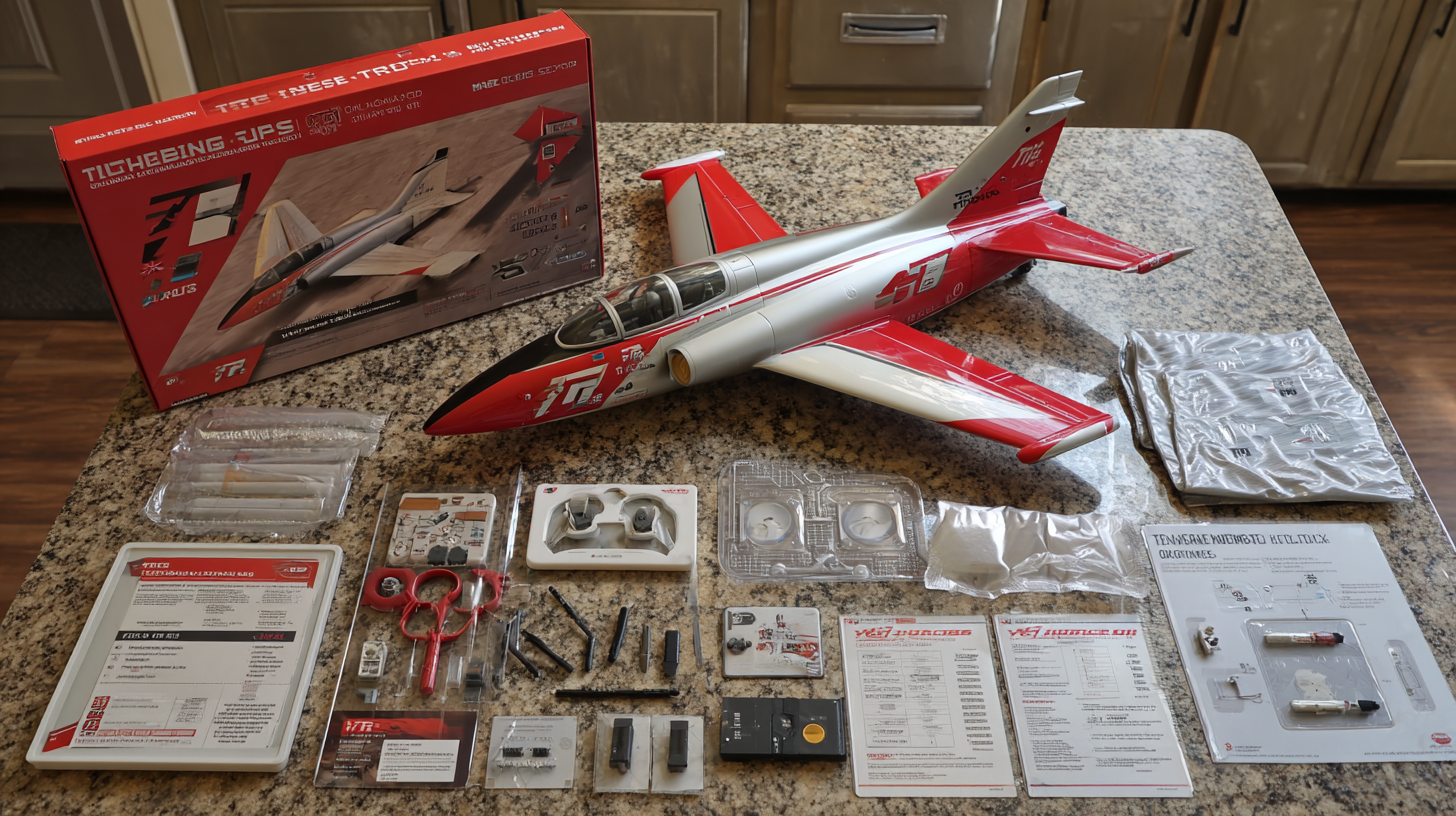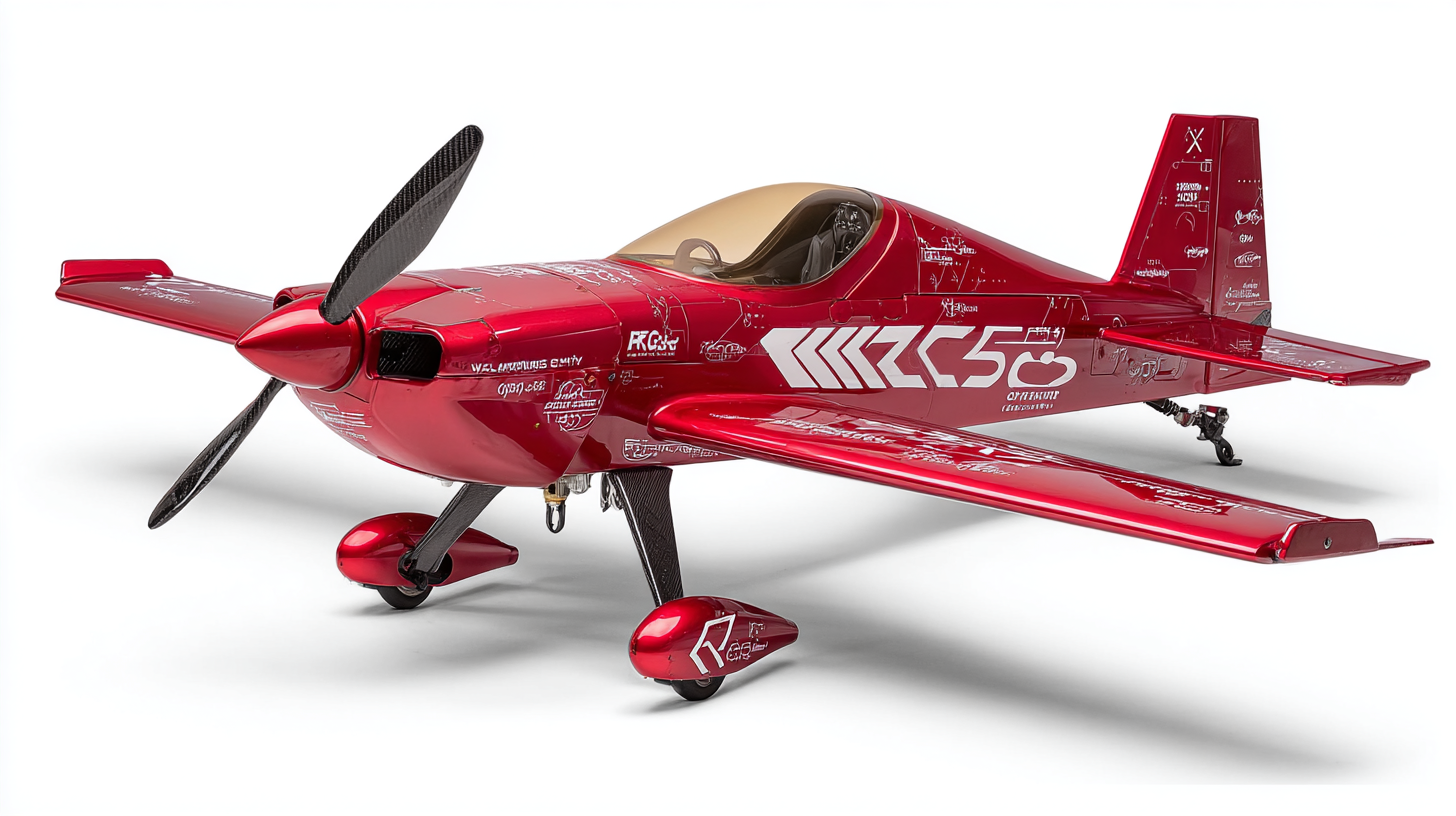In recent years, the demand for RC airplane kits has surged, driven by the growing interest in aerial hobbies and advancements in technology. According to a report by MarketsandMarkets, the global market for RC toys, including airplanes, is projected to reach USD 2.3 billion by 2025, reflecting an annual growth rate of over 8%. This boom is not only attributed to the affluence of hobbyists but also to the influx of innovative design and superior manufacturing techniques from world-class factories, particularly in China. As we approach 2025, we witness a plethora of cutting-edge innovations in RC airplane kits that are catering to both novice flyers and seasoned enthusiasts alike. This ultimate guide will explore the best offerings available to global buyers, ensuring you stay at the forefront of this exciting hobby.

As we approach 2025, the evolution of RC airplane kits showcases significant trends that are reshaping the market for enthusiasts and hobbyists alike. Recent analyses indicate a strong growth trajectory in the global remote control airplane market, driven by advancements in technology and increasing demand across diverse demographics. Manufacturers are now focusing on integrating cutting-edge materials and innovative designs, allowing for enhanced flight performance and user experience. This shift not only caters to seasoned pilots but also engages newcomers eager to explore the world of remote-controlled flying.

Furthermore, as the aerospace sector continues to embrace digital transformation, we see the emergence of smart features in RC airplane kits. From app-controlled functionalities to the incorporation of artificial intelligence for improved stability and navigation, these innovations are set to redefine how remote-control aircraft are experienced. Markets are adapting to these trends, highlighting the importance of consumer insights and responsiveness to market dynamics. The 2025 landscape promises to be rich with opportunities for both manufacturers and users, marking a pivotal period in the evolution of RC airplane kits.
When selecting high-performance RC airplane kits, there are several key features that can significantly enhance your flying experience. First and foremost, consider the material quality of the airframe. Lightweight yet durable materials like foam and carbon fiber provide a balance of strength and agility, allowing for impressive maneuverability in the air. Additionally, weight distribution is crucial; look for kits that include detailed specifications to ensure optimal center of gravity, which greatly influences stability during flight.
Another vital aspect is the power system, which includes the motor, battery, and ESC (electronic speed control). High-efficiency brushless motors paired with quality LiPo batteries can drastically improve flight times and performance. Ensure that the kit allows for easy upgrades, as technology in RC aircraft continually evolves. Finally, pay attention to the control system. Advanced kits often come equipped with programmable transmitters and state-of-the-art stabilization technology, making them beginner-friendly while still appealing to seasoned pilots looking for precision and responsiveness.
This chart illustrates the key features to look for in high-performance RC airplane kits based on user preferences. The data includes the percentage of buyers prioritizing different features in their purchasing decisions.
As the demand for environmentally responsible products rises, the RC airplane manufacturing industry is stepping up with innovative, sustainable practices. One notable trend is the use of biodegradable materials in aircraft construction. Manufacturers are investing in advanced composites that reduce reliance on traditional plastics, thus minimizing environmental impact. This shift not only helps preserve ecosystems but also appeals to a growing demographic of eco-conscious consumers looking for guilt-free hobbies.
When selecting an RC airplane kit, consider models that incorporate recycled materials. This small choice contributes to larger sustainability efforts within the industry. Additionally, look for companies that prioritize eco-friendly packaging and shipping methods, further reducing the carbon footprint associated with your purchase.
Another exciting development in sustainable RC airplanes is the integration of green energy solutions. Electric-powered models that utilize renewable energy options, such as solar cells, are gaining traction. These innovations signify an exciting shift in the hobby, allowing enthusiasts to fly with the peace of mind that their flights are powered by clean energy. Prioritizing these kits not only enhances your flying experience but also supports the broader goal of environmental stewardship in recreational activities.
When stepping into the exciting world of radio-controlled (RC) airplanes, beginners often face an overwhelming array of choices. According to a recent industry report by Allied Market Research, the global RC airplane market is projected to reach $1.5 billion by 2025, reflecting a growing interest in aviation hobbies. This surge emphasizes the importance of selecting the right beginner-friendly RC airplane kit, as these early experiences can significantly influence a hobbyist's long-term engagement.
Many of the top RC airplane kits for beginners focus on ease of assembly and flight stability. Kits such as the E-Flite Apprentice STS 1.5m and the HobbyZone AeroScout S 1.1m have been highlighted for their user-friendly designs and reliable performance. The AeroScout, for instance, is equipped with features like a safe engine cut-off and easy-to-use controls, making it ideal for novices. Additionally, with user reviews highlighting a 90% satisfaction rate with beginner kits, it's clear that a thoughtful approach to purchasing can enhance the learning curve and enjoyment for newcomers to this thrilling hobby.
| Model Name | Wingspan | Skill Level | Flight Time | Price Range |
|---|---|---|---|---|
| Beginner Air King | 36 inches | Beginner | 10-15 minutes | $80 - $100 |
| Intermediate Flyer 2000 | 48 inches | Intermediate | 15-20 minutes | $150 - $200 |
| Expert Racing Ace | 60 inches | Expert | 20-25 minutes | $300 - $400 |
| Sport Flyer 300 | 54 inches | Advanced | 18-22 minutes | $200 - $250 |
| Stunt High Flyer | 52 inches | Intermediate | 12-16 minutes | $100 - $150 |
As we approach 2025, the integration of advanced technologies into the realm of remote control (RC) airplanes is set to redefine the hobbyist landscape. According to the recent aerospace and defense industry outlook, broad operationalization of various technologies is anticipated, particularly in manufacturing and product integration. This shift will enable RC airplane kits to incorporate smart features like AI-driven flight controls, enhancing user experience and accessibility for amateur and professional pilots alike.
Moreover, the semiconductor industry is projected to experience remarkable growth, with sales expected to reach $627 billion in 2024, marking a significant 19% increase. This boom will undoubtedly fuel innovation in the RC airplane sector, providing manufacturers with the necessary resources to develop sophisticated, embedded systems that offer improved performance and durability. Features such as real-time telemetry data, GPS navigation, and enhanced connectivity will become more standard, catering to a global market increasingly demanding cutting-edge functionality from their RC aircraft.
Amidst these advancements, nations like China are rapidly emerging as innovators in advanced industries, bolstering their capabilities in technology development. This competitive landscape suggests that global buyers can expect a greater variety of high-quality, feature-rich RC airplane kits that integrate the latest technological advancements, making 2025 an exciting year for aeromodelling enthusiasts.

